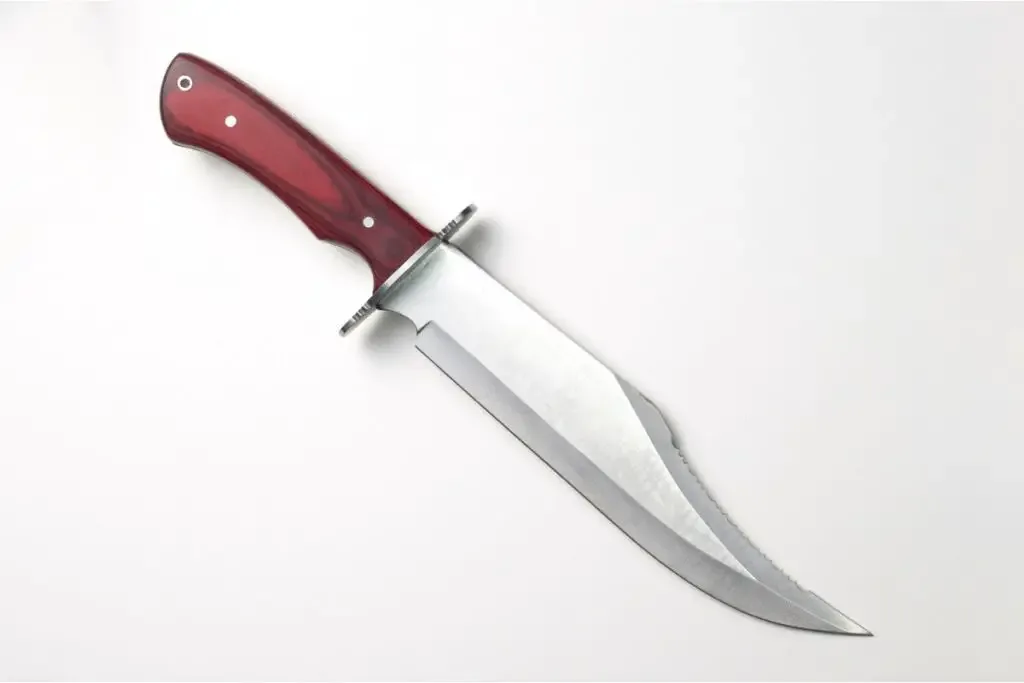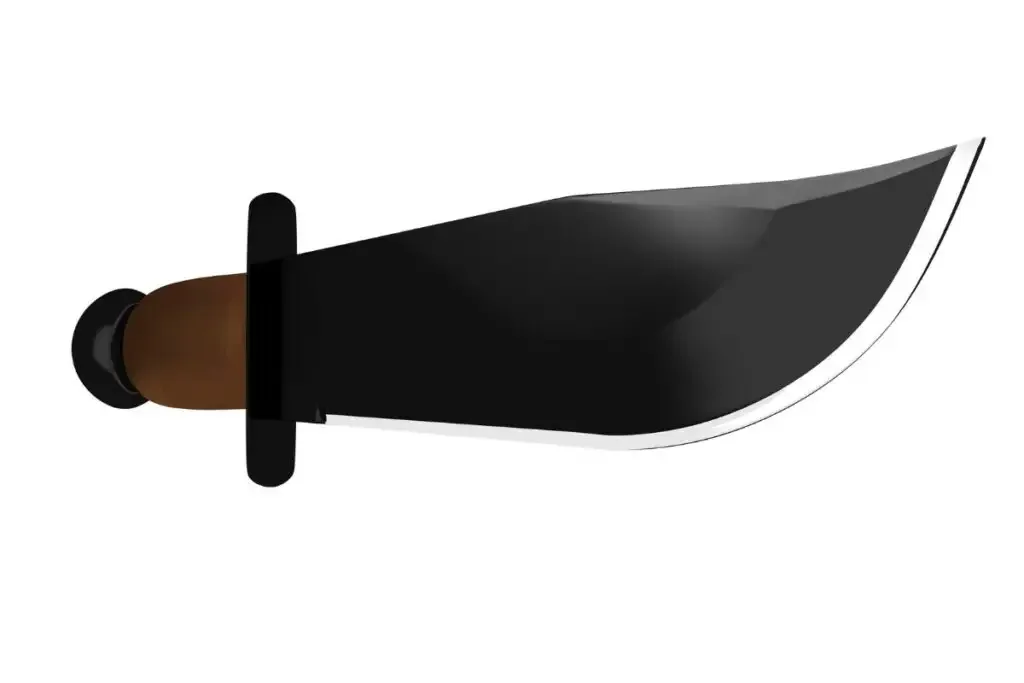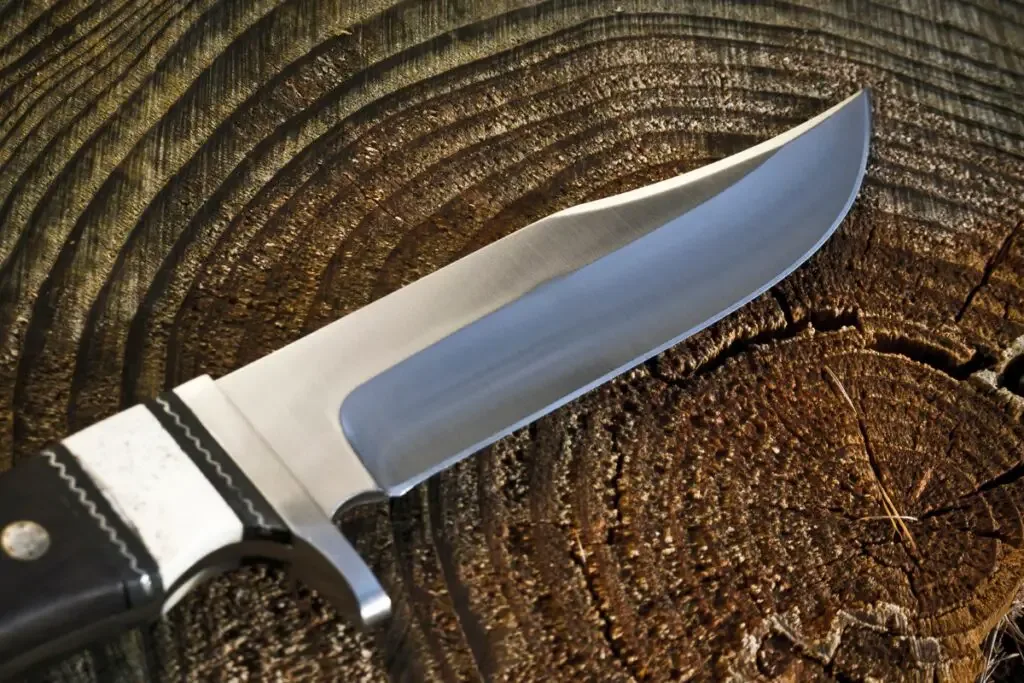As an Amazon Associate, we earn from qualifying purchases with no additional costs for you.
Knife geometry and design can be a topic that results in heated discussion since many knifemakers and owners have their own opinions on these aspects of knives. The false edge on a knife is one such aspect of knife blade design that is not always clear, and the waters get further muddied by speculation and opinion. A false edge on a knife blade can be included in the design for a variety of reasons.
A false edge, or swedge, as it is known, is an aspect of knife blade design that is incorporated for aesthetics, weight reduction, or enhancing the use of the tip as a penetrating tool. A false edge is most common on a clip-point blade, and in some instances, can be sharpened.
A false edge on a knife is included in the design for several reasons, some of which are functional and others which are simply for visual appeal on the knife. The false edge is normally associated with knives that have a particular style or shape of the blade but is not necessarily restricted to these designs.
If you are interested in checking out the best tactical and military knives (made by the famous US knife maker company KA-BAR) we recommend and use you can find them by clicking here (Amazon link).
What Is A False Edge On A Knife?

A false edge on a knife is often referred to by knifemakers as a swedge. It is described as a beveled area, usually on the spine of the knife, that gives the appearance of a sharp edge but is not actually sharpened.
The false edge appears as an additional facet ground into the spine of the knife and gives the impression of a sharp edge. It can extend along the spine towards the handle for one-third or half the length of the blade. It is unusual to have a false edge that extends further than this point.
The false edge is normally ground at a wider angle than is typically used to grind to the sharp edge or cutting edge of the knife. It is also generally a fairly shallow grind and does not extend very far down the blade of the knife.
The knife blade shape where you are most likely to see a false edge is in knives that have a clip-point blade design.
A clip-point blade is where the spine of the knife is ground to slope down towards the pointed tip of the blade and often aligns the tip of the blade with the central axis of the knife.
A clip-point blade can slope in a straight line down to the tip, or it could have a recurve shape to it, which gives the tip the impression of sweeping upwards.
Some famous knife styles incorporate the clip-point into the design, the most famous of which is probably the Bowie knife.
The Bowie knife design varies, sometimes with a recurved clip-point and sometimes straight, and with or without false edges on the clip-point.
The clip of the knife in this design usually only extends one-third or halfway down the blade toward the handle. The false edge is usually located on this section of the blade, which is why the false edge also only extends to these limitations on the spine of the knife.
A false edge is not only found on clip-point knives, however, and could be incorporated into knife blades that have normal straight spines, trailing-point blades, drop-point blades, and Spey-point blades. In some cases, a knife may have multiple false edges ground into the spine in different locations.
What Is The Purpose Of A False Edge On A Knife?

The purpose of the false edge on the knife depends largely on the intention of the designer of the knife and the intended purpose of the knife. The false edge can have practical uses as well as simply be a design feature to enhance the look of the knife.
The most common reasons that a knifemaker includes a false edge in the design of the knife are as follows:
- Aesthetics
- Weight reduction
- Enhancing the use of the tip as a penetrating tool
- Improved balance
1. A False Edge For Aesthetics
A false edge on the spine of the knife can serve to break up the straight lines of the spine and add a three-dimensional look to the blade of the knife.
The swedge, or false edge, for aesthetic purposes, can be seen as an additional facet that catches the eye. It breaks up the straight lines on the knife and indicates that thought and care have gone into the design of the knife to enhance the look and visual appeal of the knife.
False edges on a knife often give the knife a tactical or military-style look to the knife, which is appealing in the design of certain knives.
A false edge looks particularly good on a chunky knife that is made from thick steel but has less appeal on a knife that is made from thinner steel stock and could weaken the tip of the knife.
Our choice: If you are interested in buying a high-quality tactical knife take a look at the 7-Inch Combat Utility Knife or Full-Size US Marine Corps Fighting Knife (Amazon links) made by KA-BAR, a legendary American knife manufacturer with more than 200 years of tradition in the production of knives.
2. A False Edge On A Knife For Weight Reduction
If a knife has a long blade or the blade is made from thick steel, the blade could become quite heavy, which can affect the overall balance of the knife and the way in which the knife can be used.
A false edge is often used in knives with long blades or thick blades to reduce the weight of the blade and adjust the balance of the knife to be more appropriate for the intended use of the knife. This weight reduction also makes the blade lighter and easier to handle.
Multiple false edges can be incorporated into the spine of the knife to reduce weight at certain locations in the blade to adjust the overall balance and performance of the knife.
TIP: Maybe you are also interested in why some knives have holes in the handle. Click the article below to find out!
6 Reasons Why (Some) Knives Have Holes In The Handle
3. A False Edge To Enhance Knife Tip Penetration

A clip-point design and, in some cases, a drop-point design knife have a very sharp pointed tip that can be used for various purposes on a knife.
A false edge toward the pointed tip of the knife will break the 90-degree edges on the spine of the knife, which enhances the penetrability of the knife in a stabbing action. The false edge also removes weight from the tip, making it nimbler and more controllable.
An instance where this type of design has a practical purpose is in the blade of a hunting knife. The sharp point can be used to penetrate through the skin of the animal to begin the skinning process.
When the knife is used in the upside-down orientation to run the cut up the animal, the false edge allows the knife to move smoothly up inside the animal without any sharp angles on the spine of the knife to hinder the passage of the blade through the skin of the animal.
4. A Sharp Edge For Improved Balance
The balance of a knife is a crucial aspect that often goes unnoticed by the casual user but is deeply appreciated by enthusiasts and professionals. A knife’s balance refers to its weight distribution, which can significantly impact its performance, ease of use, and overall feel in the hand. The introduction of a false edge plays a pivotal role in enhancing this balance.
- Center of Gravity Shift: By removing material from the spine to create a false edge, the knife’s center of gravity can shift closer to the handle. This shift allows for better control during precision tasks, as the user doesn’t have to exert as much force to maneuver the blade. It’s akin to driving a well-balanced sports car; the responsiveness and control are immediately noticeable.
- Reduced Fatigue: A well-balanced knife, thanks to its false edge, reduces hand and wrist fatigue, especially during prolonged use. When the weight is distributed evenly, or slightly towards the handle, the user can make consistent cuts without exerting extra effort to stabilize the blade. This is particularly beneficial for chefs or craftsmen who use knives for extended periods.
- Safety and Control: A balanced knife is a safer knife. When the weight is evenly distributed, there’s a reduced risk of the blade veering off course or slipping. This control is vital when working with tough materials or when precision is paramount. The false edge’s contribution to this balance can be the difference between a clean cut and a potential accident.
- Optimized Performance in Various Tasks: Whether it’s slicing, dicing, chopping, or carving, a balanced knife performs each task more efficiently. The false edge’s influence on the knife’s balance ensures that the blade moves smoothly, without unnecessary resistance or wobble. This optimization can lead to cleaner cuts and a more enjoyable user experience.
By removing material from the spine, the false edge can shift the blade’s center of gravity, enhancing its balance. A well-balanced knife offers better control, especially during intricate tasks or when precision is required. It transforms the knife from a basic tool to an extension of the user’s hand, enhancing performance, safety, and overall knife-use experience.
Can A False Edge Be Sharpened?

Because a false edge is essentially a bevel towards the spine of the knife without the final sharp secondary bevel or cutting edge, it is conceivable that the false edge can be sharpened.
Whether or not a false edge can be sharpened will rely on the design of the false edge. It would be possible in some instances to sharpen the false edge and produce a sharp cutting edge on the spine side of the knife. This will, in effect, turn the knife into a dagger which is illegal in some areas.
Once a sharp edge has been put on a false edge, it changes the dynamic of the knife completely and can pose a danger or a logistical problem in the storage and extraction of the knife.
For example, if the knife is a folder and the blade protrudes above the handle when it is in the closed position, it would not be a good idea to sharpen the false edge.
This would result in a sharp cutting edge on the blade that is always exposed, even when the blade is folded in the closed position.
In certain locations, having a dagger in your possession is deemed illegal, and sharpening the false edge on the top of the knife could result in the knife being classified as a dagger, making it illegal to possess. You would need to check the regulations in your area before proceeding with this alteration to your knife.
BTW: If you want to know more about Japanese and other knives and their sharpening, check out the books listed above. These books are recommended by professional sharpeners and knife makers (Amazon links):
- Japanese Kitchen Knives: Essential Techniques and Recipes
- The Knifenerd Guide to Japanese Knives
- Knife: The Culture, Craft, and Cult of the Cook’s Knife
- Sharp: The Definitive Introduction to Knives, Sharpening, and Cutting Techniques, with Recipes from Great Chefs
Conclusion
While the inclusion of a false edge on a knife can have practical applications to the function and weight of the knife, it always adds a different component to the visual aspect of the knife.
Some people like the look of a false edge on a knife blade, others hate it, and others still could take it or leave it. Whatever your stance on the matter, it will remain a feature on many knife designs that have tapered points.
TIP: The best way how to keep your Japanese knives sharp is by using whetstones! If you are interested in buying whetstones, click the article below for the ultimate buyer´s guide!
How To Choose And Buy A Whetstone: The Ultimate Buyer’s Guide

